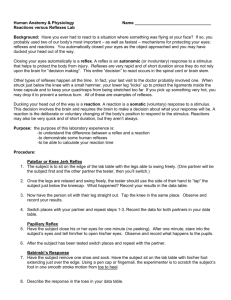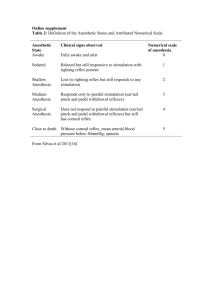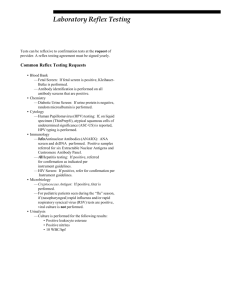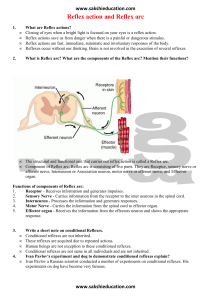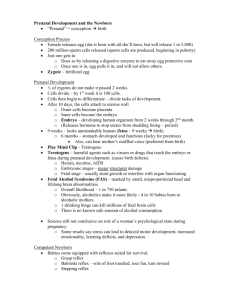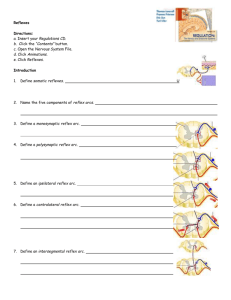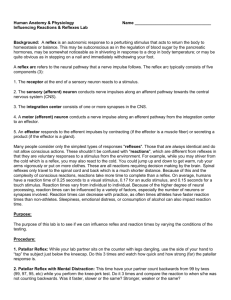Human Reflex Physiology
advertisement
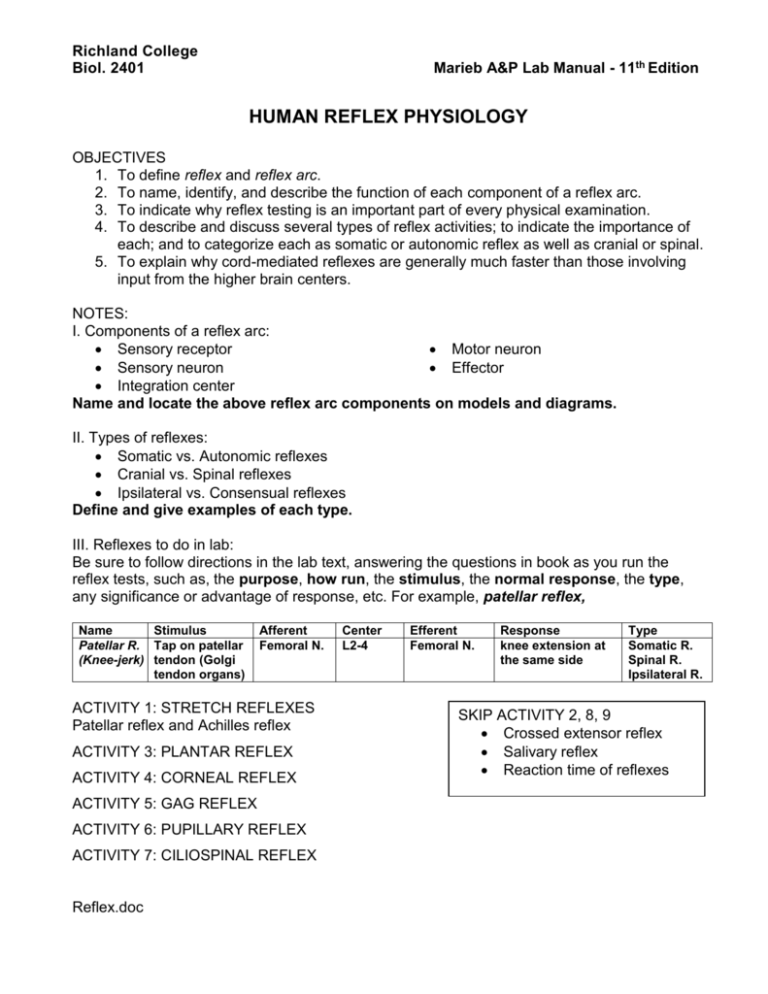
Richland College Biol. 2401 ACTIVITY 5: Audiometry Marieb A&P Lab Manual - 11th Edition HUMAN REFLEX PHYSIOLOGY OBJECTIVES 1. To define reflex and reflex arc. 2. To name, identify, and describe the function of each component of a reflex arc. 3. To indicate why reflex testing is an important part of every physical examination. 4. To describe and discuss several types of reflex activities; to indicate the importance of each; and to categorize each as somatic or autonomic reflex as well as cranial or spinal. 5. To explain why cord-mediated reflexes are generally much faster than those involving input from the higher brain centers. NOTES: I. Components of a reflex arc: Sensory receptor Motor neuron Sensory neuron Effector Integration center Name and locate the above reflex arc components on models and diagrams. II. Types of reflexes: Somatic vs. Autonomic reflexes Cranial vs. Spinal reflexes Ipsilateral vs. Consensual reflexes Define and give examples of each type. III. Reflexes to do in lab: Be sure to follow directions in the lab text, answering the questions in book as you run the reflex tests, such as, the purpose, how run, the stimulus, the normal response, the type, any significance or advantage of response, etc. For example, patellar reflex, Name Stimulus Patellar R. Tap on patellar (Knee-jerk) tendon (Golgi tendon organs) Afferent Femoral N. ACTIVITY 1: STRETCH REFLEXES Patellar reflex and Achilles reflex ACTIVITY 3: PLANTAR REFLEX ACTIVITY 4: CORNEAL REFLEX ACTIVITY 5: GAG REFLEX ACTIVITY 6: PUPILLARY REFLEX ACTIVITY 7: CILIOSPINAL REFLEX Reflex.doc Center L2-4 Efferent Femoral N. Response knee extension at the same side Type Somatic R. Spinal R. Ipsilateral R. SKIP ACTIVITY 2, 8, 9 Crossed extensor reflex Salivary reflex Reaction time of reflexes


